How To Make Quark Cheese
This post may contain affiliate links. See my disclosure policy.
Quark is a wonderfully creamy, spreadable soft cheese that’s deliciously versatile in both sweet and savory dishes. Now you can make it yourself for a fraction of the cost and it tastes better than store-bought! Learn how to make homemade quark cheese the right way for the BEST flavor and texture!
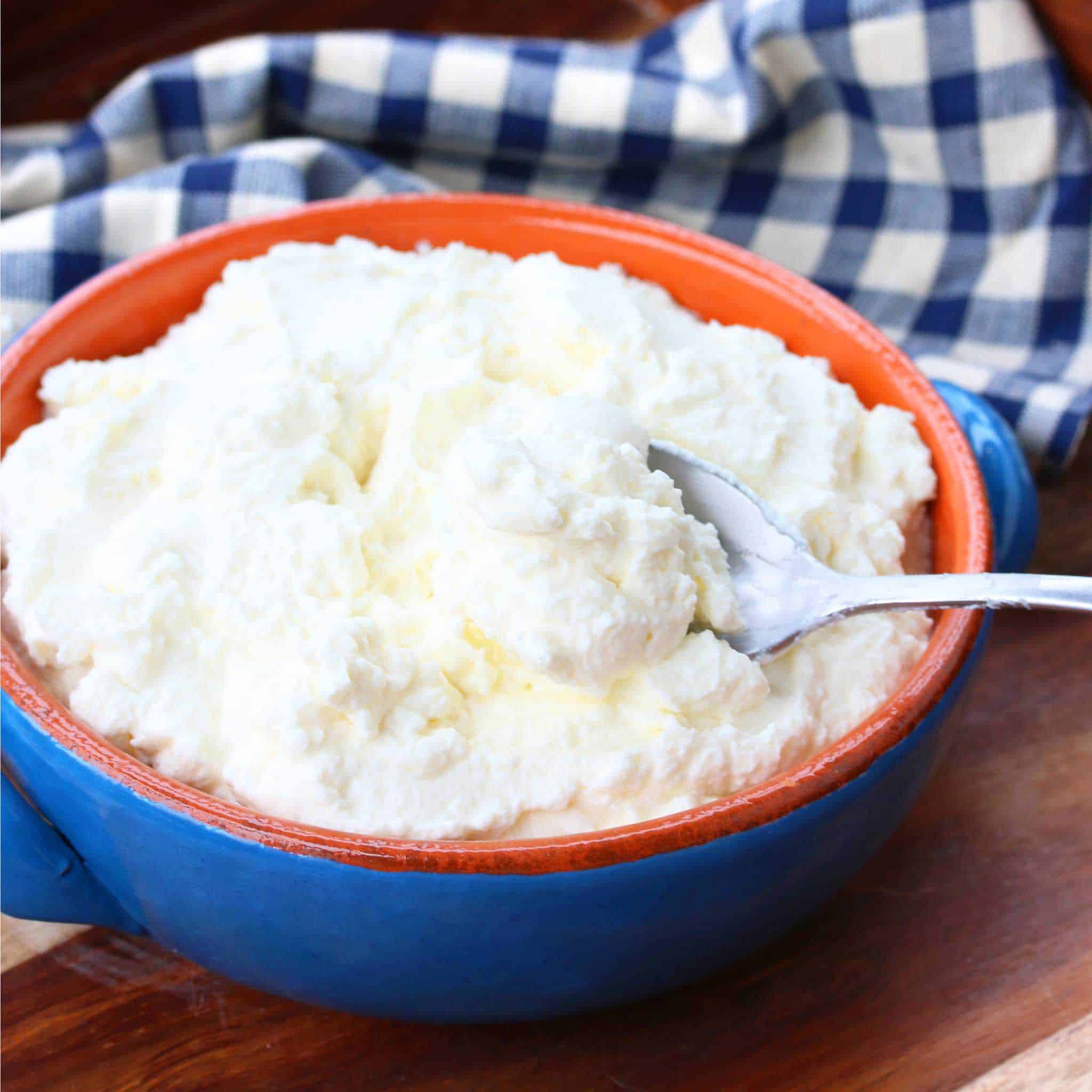
Being from southern Germany, Quark is something I grew up eating on a regular basis. Since moving to the U.S. I’ve had to adjust to the fact that I can no longer readily or cheaply find it in the grocery stores. For anyone living outside of Western Europe, quark is not only challenging to find (in some places downright impossible), it’s also very expensive. This tutorial will show you how to make quark right at home that not only tastes better than the store-bought stuff, but is also much cheaper!
What is Quark?
Quark is a kind of soft, creamy, spreadable cheese that has been around for millennia and is known by different names in different countries. The most popular version of this cheese is Germany’s Quark. It’s very versatile and is used in both sweet and savory recipes. Some have dubbed it as “Germany’s Greek yogurt” but it’s really not an accurate comparison because not only is it thicker (a spreadable cheese) and has a different flavor (less tart and tangy, mild but more complex), the process of making it is also different. It has also been described as something of a mix between yogurt and cottage cheese.
Is Quark Healthy?
Quark is a great source of protein, calcium, vitamins A and B, and probiotics. Quark is traditionally made with whole milk and so cup for cup has a higher protein content than plain, low-fat Greek yogurt or skyr. Being made with whole milk it has a higher fat (and therefore calorie) content than low-fat yogurt so keep that in mind if you’re on a calorie-restricted diet.
How to Use Quark
Quark is very versatile and, like cream cheese, cottage cheese and yogurt, is used in a lot of both sweet and savory recipes. Here are a few ideas to get you started:
- Spread it on toast or bagels with your favorite savory or sweet toppings
- Use it as a base for parfaits
- Mixed with fruit preserves or fresh fruit for a quick and healthy dessert
- In smoothies for a great velvety texture
- Use it in anything that calls for cream cheese
- On baked potatoes
- Add herbs and garlic to make a delicious spreadable cheese or serve with boiled potatoes
- Add lemon zest or cinnamon and honey for a delicious fruit spread or dip
- Filling Danish pastries
- In your muffin, cupcake or cake batter
- In bread doughs
- In creamy salad dressings
- In creamy sauces in place of sour cream, heavy cream or yogurt
German cheesecake is also made with quark. Many of our readers have lamented the fact that they can’t make proper German cheesecake because it’s so difficult to find quark and when you do it comes with a hefty price tag. Friends, problem solved!
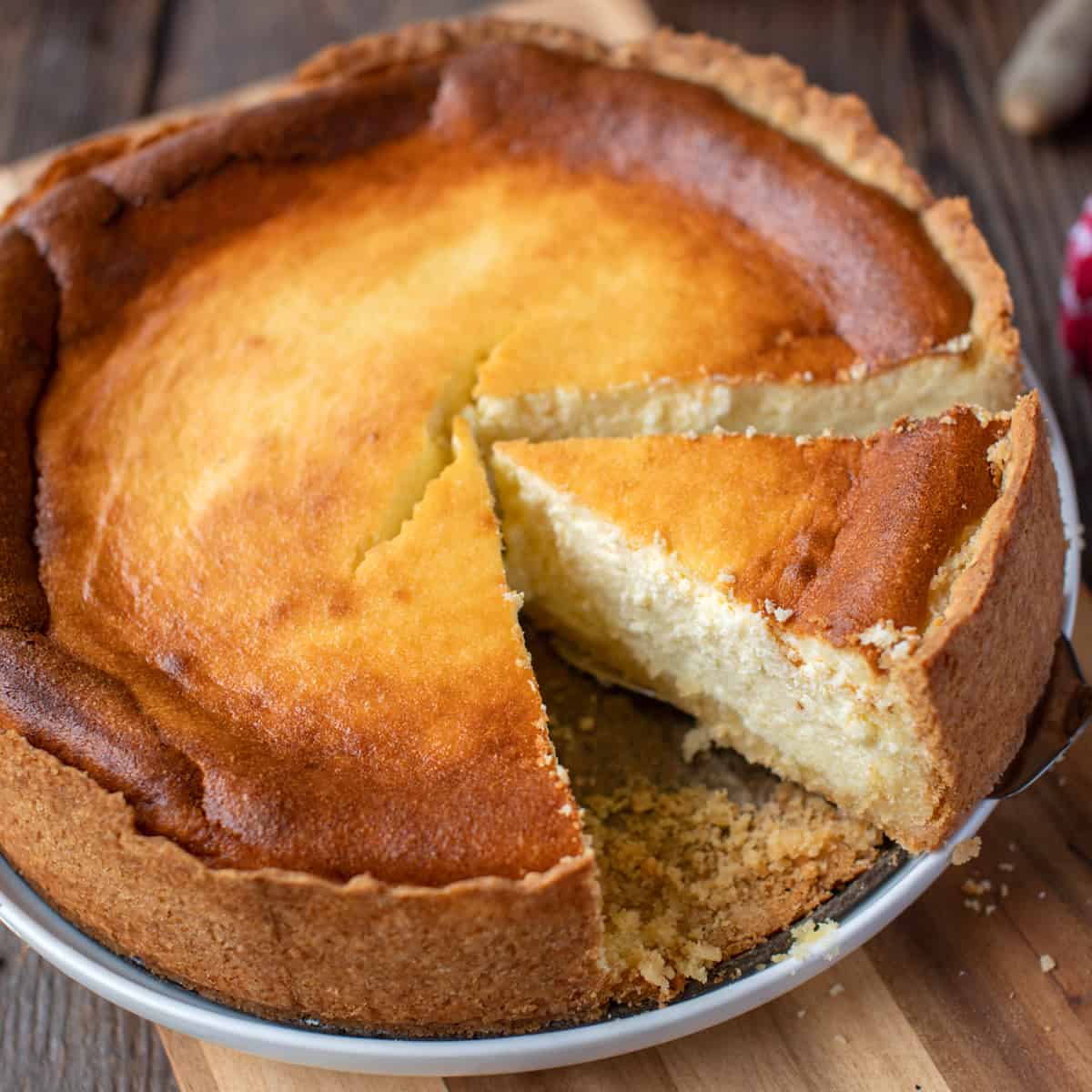
How Long Does Quark Keep?
Made as described in this recipe your quark will keep for about two weeks in the refrigerator.
Can You Freeze Quark?
You can but it isn’t idea as the texture and consistency will change. As it thaws the liquid will separate so give it several good stirs.
Should I Use Whole, 2%, Skim or Non-Fat Milk?
For the best texture and flavor we recommend using whole milk. But you can use 2% or skim milk if you prefer. We do not recommend using non-fat milk.
Hands down, raw milk will give you the best texture and flavor (that’s what I use). However, you can make great quark with pasteurized milk also. If you can find non-homogenized, even better. If not, proceed with what you have.
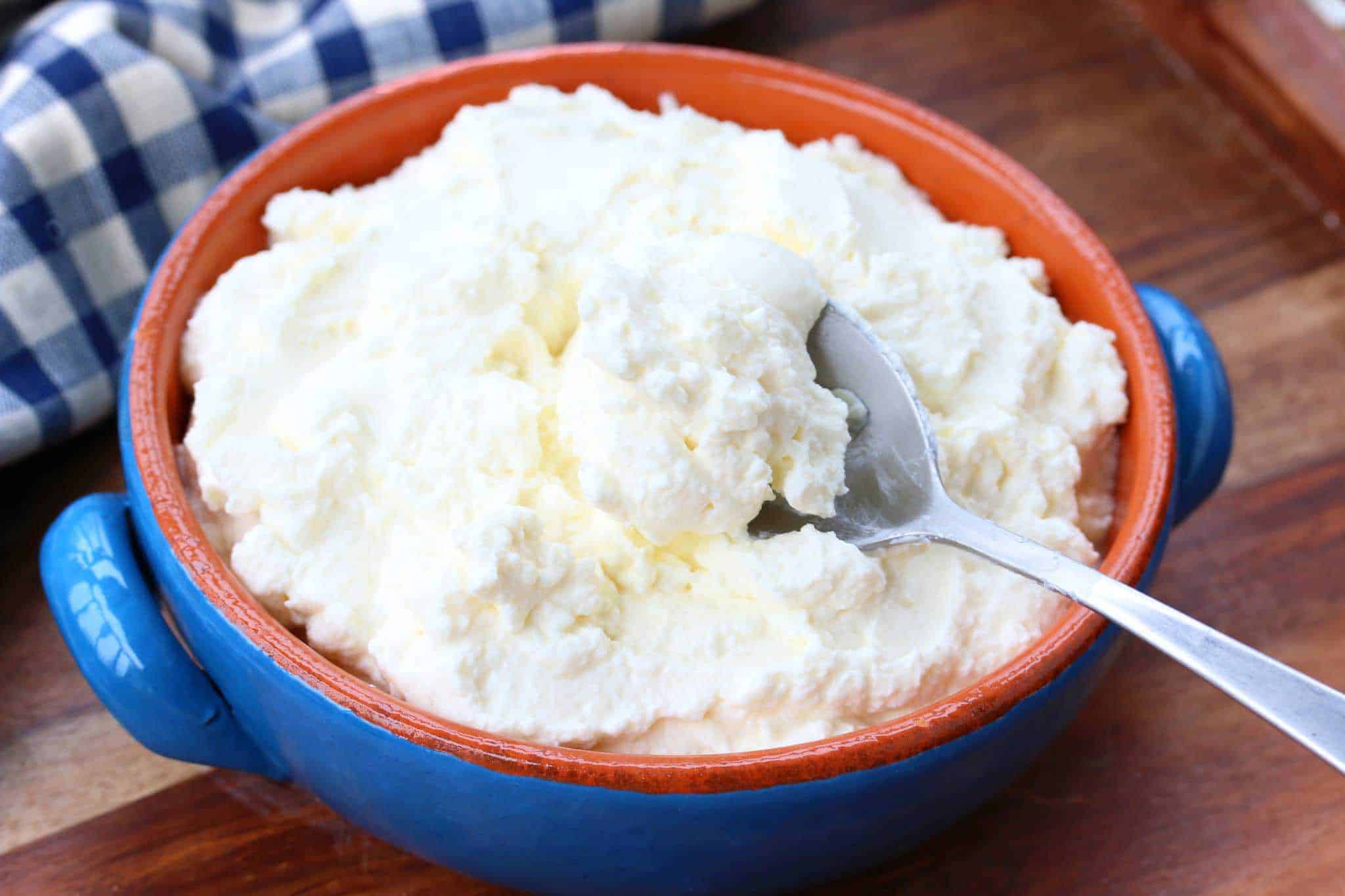
Do I Have To Use Rennet?
Traditionally quark was made without rennet. But that’s because traditionally quark was made with raw milk. Pasteurized milk will not “set” or thicken as well as raw milk and so a tiny bit of rennet is used.
If you’re vegetarian you can use vegetarian rennet, however some people report that it has a bitter flavor.
Do Have to Use a Culture or Can I Use Buttermilk?
Here’s the deal: The vast majority of recipes out there for quark call for heating milk, mixing in buttermilk, letting it sit for several hours until it thickens and then straining it.
The problem with using buttermilk to make quark:
Let’s start with a little background. Traditionally buttermilk was what was left behind after creamed was made into butter. The leftover liquid would be left to sit at room temperature for several days and undergo fermentation wherein milk sugars would be converted into lactic acid and bacteria/cultures would grow. The end result would be a mildly sour and slightly thickened buttermilk with healthy live cultures that could be consumed directly or used in a variety of cheesemaking processes.
The challenge today is that virtually all dairy products are pasteurized, including the buttermilk you get at the store. What this means is that all the benefits of the fermentation process are gone and that all the live cultures/bacteria have been killed off. And those live cultures in the buttermilk are the very reason many recipes call for it when making quark.
So to try and circumvent, manufacturers simply reintroduce bacteria to pasteurized low-fat milk and then market it as “cultured buttermilk.” The result in a completely inferior-tasting product (no wonder many people say they dislike buttermilk – and would likely change their minds if they could taste the “real thing”). This likewise results in an inferior-tasting quark. And how do manufacturers make up for the loss of the naturally-thickened texture of REAL buttermilk? They add salt and thickeners: Starch and/or carrageenan.
So for the best-tasting and best-texture quark, we highly recommend skipping the fake, inferior-tasting buttermilk and using a real culture to inoculate your quark. This particular culture is called mesophilic culture and is the culture that is found naturally in REAL, traditionally fermented buttermilk (more on that below).
In Short….
Using buttermilk is an “easy quark” method and while it will get you a thickened milk product that you can use as quark in a pinch, but it will lack the same thickness and creaminess and will not have nearly as good or complex a flavor. We highly recommend gathering up the ingredients you’ll need to make quark that has the best flavor and the best texture.
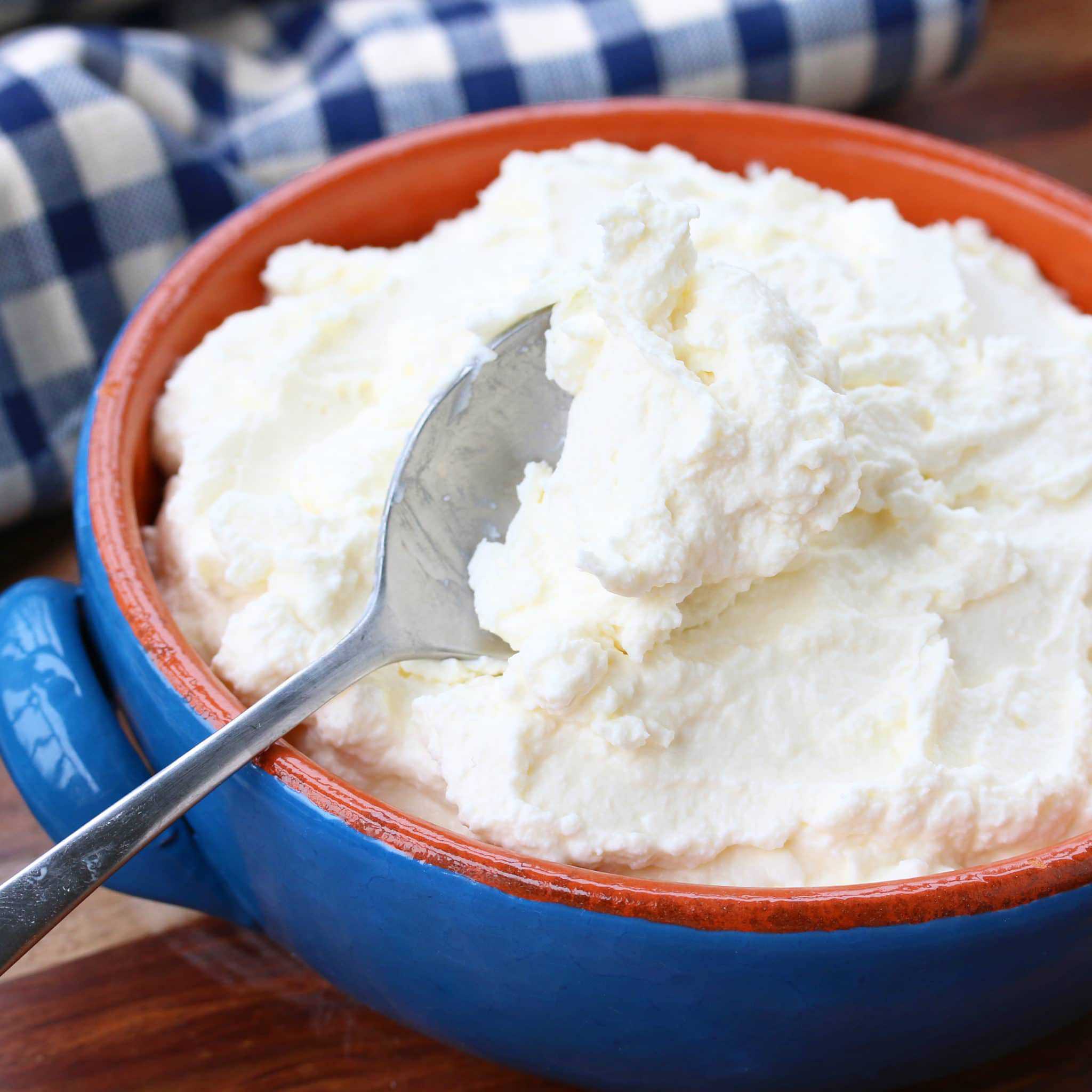
Quark Ingredients and Equipment
Here’s what you’ll need to make homemade Quark:
- A large stainless steel pot
- A stainless steel skimmer
- Whole Milk
- Mesophilic culture
- Calcium chloride
- Liquid rennet
- Thermometer
- Cheesecloth
If you’re into cheesemaking you’ll already have these items on hand. The pot and skimmer you can of course use forever and a good quality cheesecloth can be reused many times over. There’s enough calcium chloride and rennet in a bottle to make more quark than you’ll know what to do with. And the mesophilic culture will be measured out in 1/4 teaspoons per batch of quark and will make several batches. In other words, these items are good investments if you plan on making quark or other cheeses frequently. Let’s look at a few of these items in detail.
Stainless Steel Skimmer
You’ll use this to draw the culture and rennet into the milk. You can find skimmers in most kitchen stores or here on Amazon.

Mesophilic Culture
A standard cheese-making ingredient, this is the live bacteria that provides the flavor for you quark. You can find mesophilic culture in cheesemaking and winemaking speciality shops or here on Amazon.
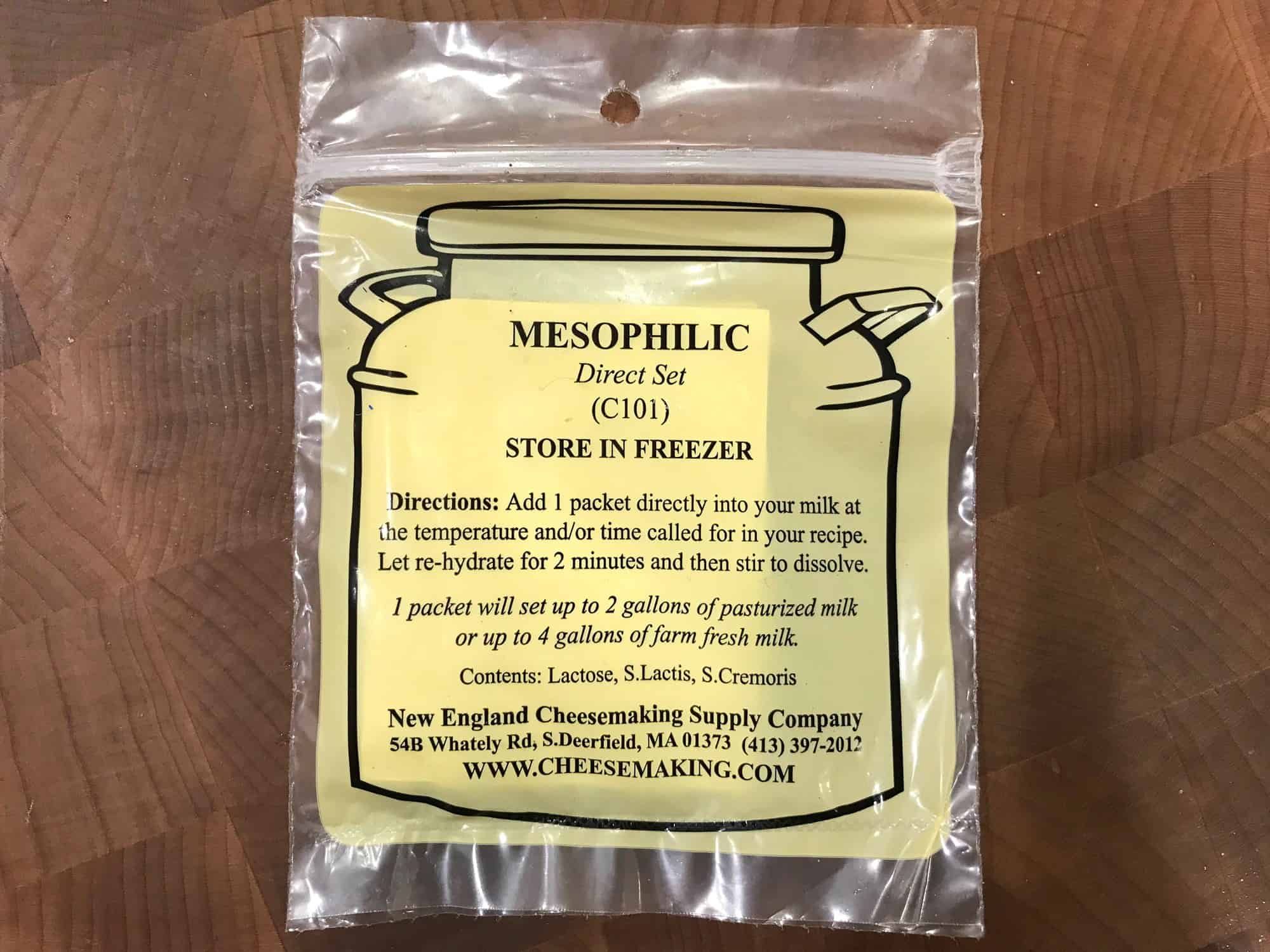
Calcium Chloride
A standard cheese-making ingredient when using store-bought pasteurized milk, it helps the milk coagulate and set more firmly. If using raw milk you can omit this. You can find calcium chloride in cheesemaking shops or here on Amazon.
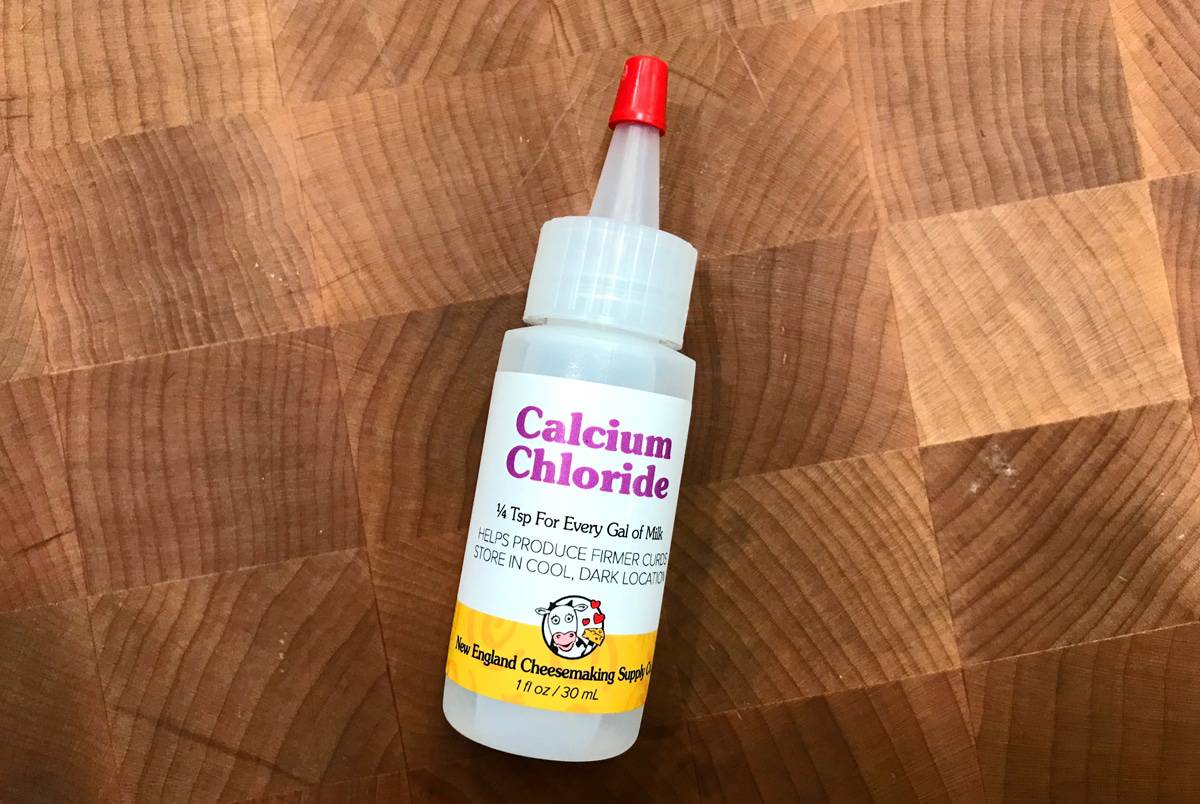
Rennet
A standard cheese-making ingredient, in conjunction with the calcium chloride this also helps coagulate and thicken your milk. You can find rennet in cheesemaking and winemaking specialty shops or here on Amazon.

Thermometer
You will need a thermometer to check the temperature of your milk. You can use a dairy thermometer or a regular digital thermometer. I use an instant read thermometer which I already have on hand and use regularly for bread-baking and other things.
Cheesecloth
This is what you will use to drain your thickened milk. I use and recommend this cheesecloth because it’s 100% unbleached cotton, is high grade, is very durable for multiple uses, and you get a ton of it. Overall it’s the best value I have found for the quality.
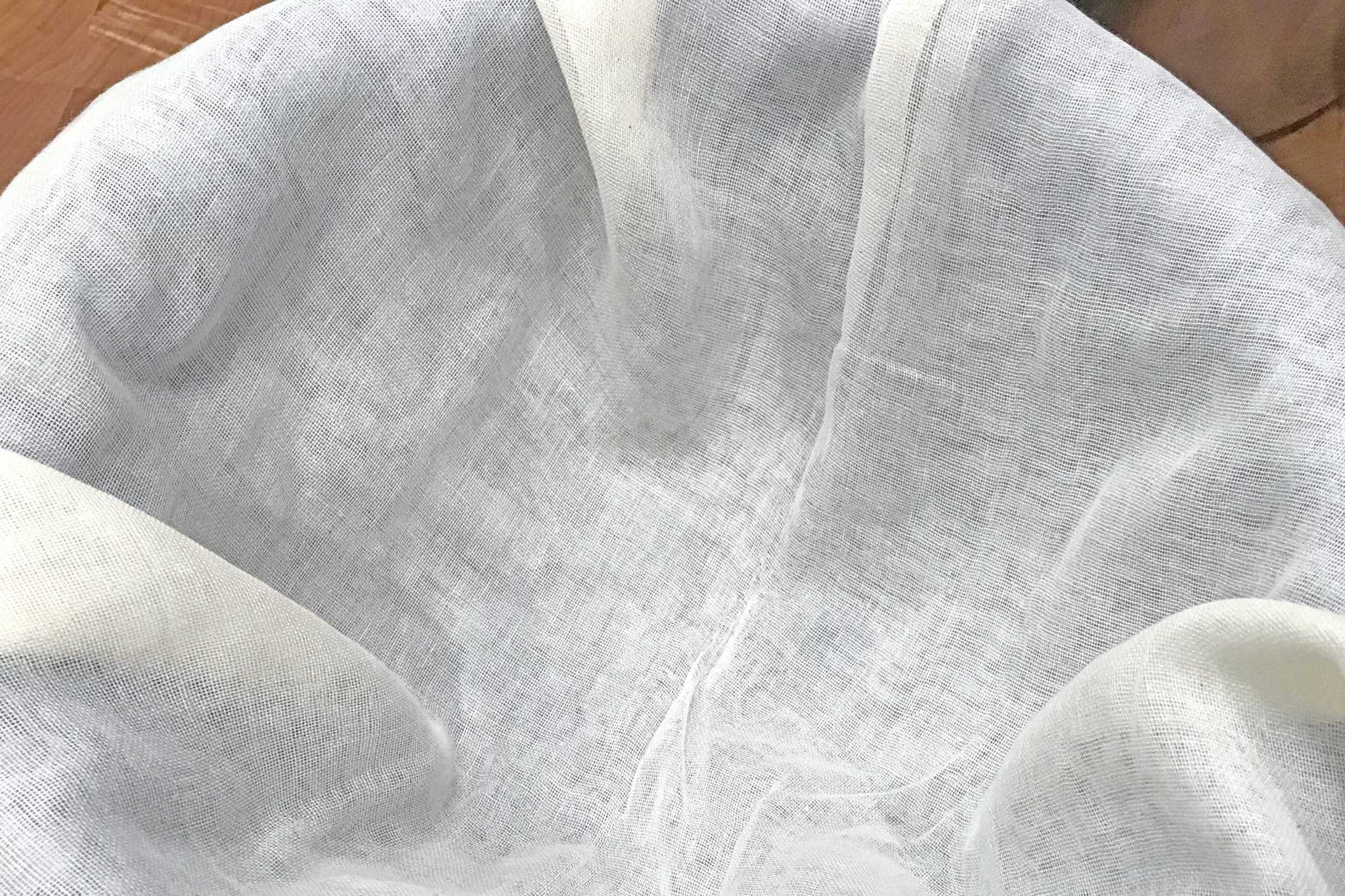
What to Do With Leftover Whey
Whey is the natural by-product whenever you’re making a cheese or yogurt product and the longer you strain the product the more whey you will get. Whey is milk minus the fats and solids, so basically water with lactose and protein. And it’s the protein that’s the valuable ingredient here. Milk contains two types of protein, casein and whey. Most of the casein ends up in the quark and the whey is in the liquid by-product.
How can you this leftover liquid whey? Here are a few ideas:
- Use it to make ricotta cheese
- Use it in place of water when you’re making broth or soup for an extra rich broth.
- Use it in place of water for baking bread or pastries.
- Add it to your smoothies of an extra protein boost.
- If you have a vegetable garden, use it lower the pH level of your soil if you’re growing things that prefer soil with a higher acidity level, like tomatoes.
Whey can be frozen and will keep in the freezer for up to 6 months.

How To Make Quark
Let’s make some homemade quark!
Put the milk in the sterilized pot over medium heat. Slowly heat it to 77 F. Don’t try and speed up this process or the milk will not set properly. Stir the milk gently with a sterilized stainless steel spoon to prevent scorching. Remove the pot from the heat.
Sprinkle the mesophilic culture evenly over the surface of the milk and let it sit for 5 minutes to rehydrate.
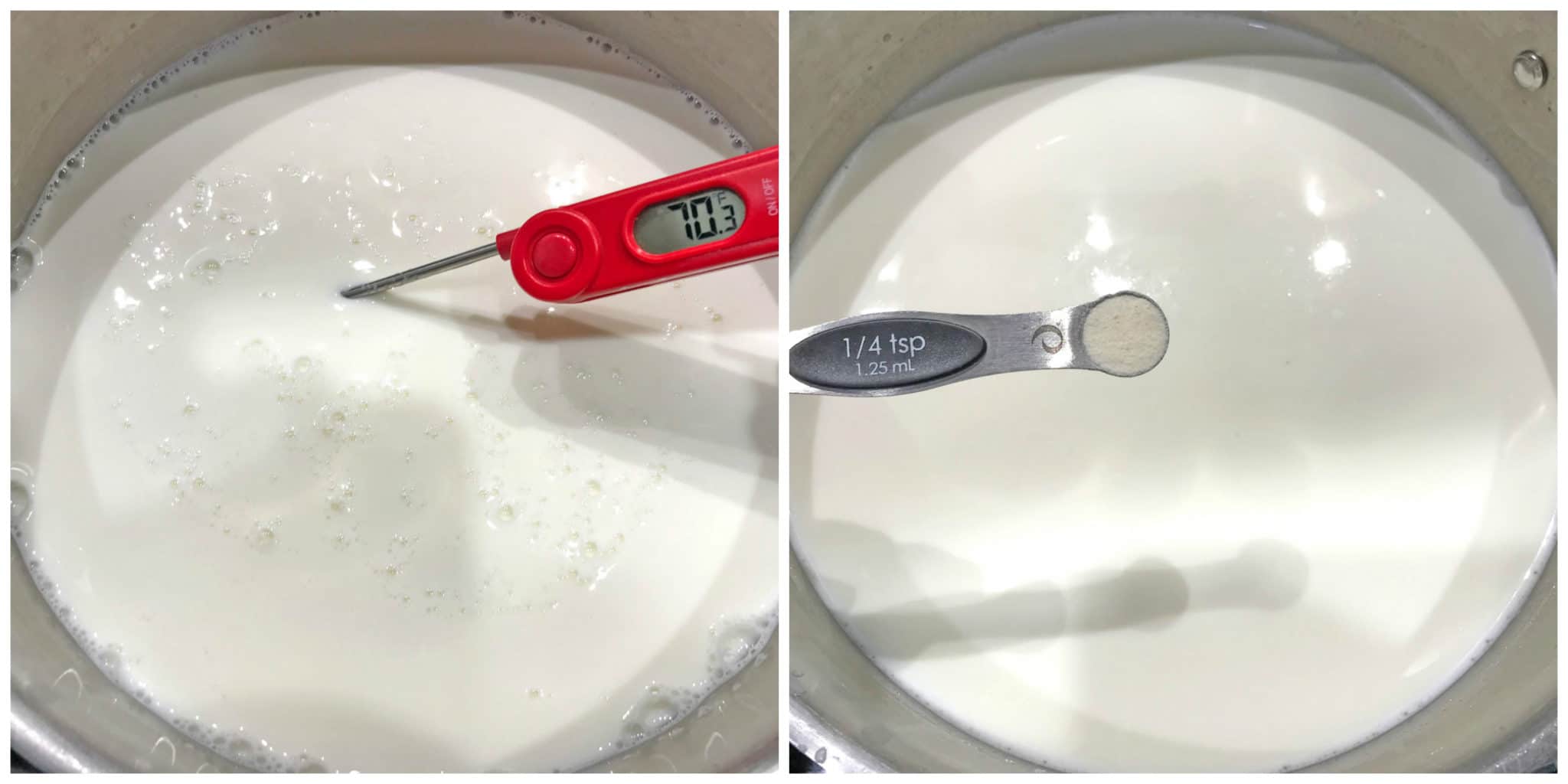
Use a sterilized stainless steel skimmer, moving it in a gentle up-and-down motion to draw down and mix in the culture, avoiding breaking the surface of the milk.
Dilute the rennet in 1/4 cup of cool, non-chlorinated water. Give the milk a gentle stir and while it’s swirling, add the diluted rennet to the milk. Immediately stir the milk with the skimmer using the same up-and-down motion. Do this for about 2 minutes, making sure the rennet is thoroughly mixed throughout the milk, otherwise the milk will not set properly.

Cover the pot and let it sit in a draft-free location at room temperature for 24 hours (wrap the pot in a large towel if needed).
After 24 hours check the milk. Tip the pot carefully to drain off the whey on the surface.
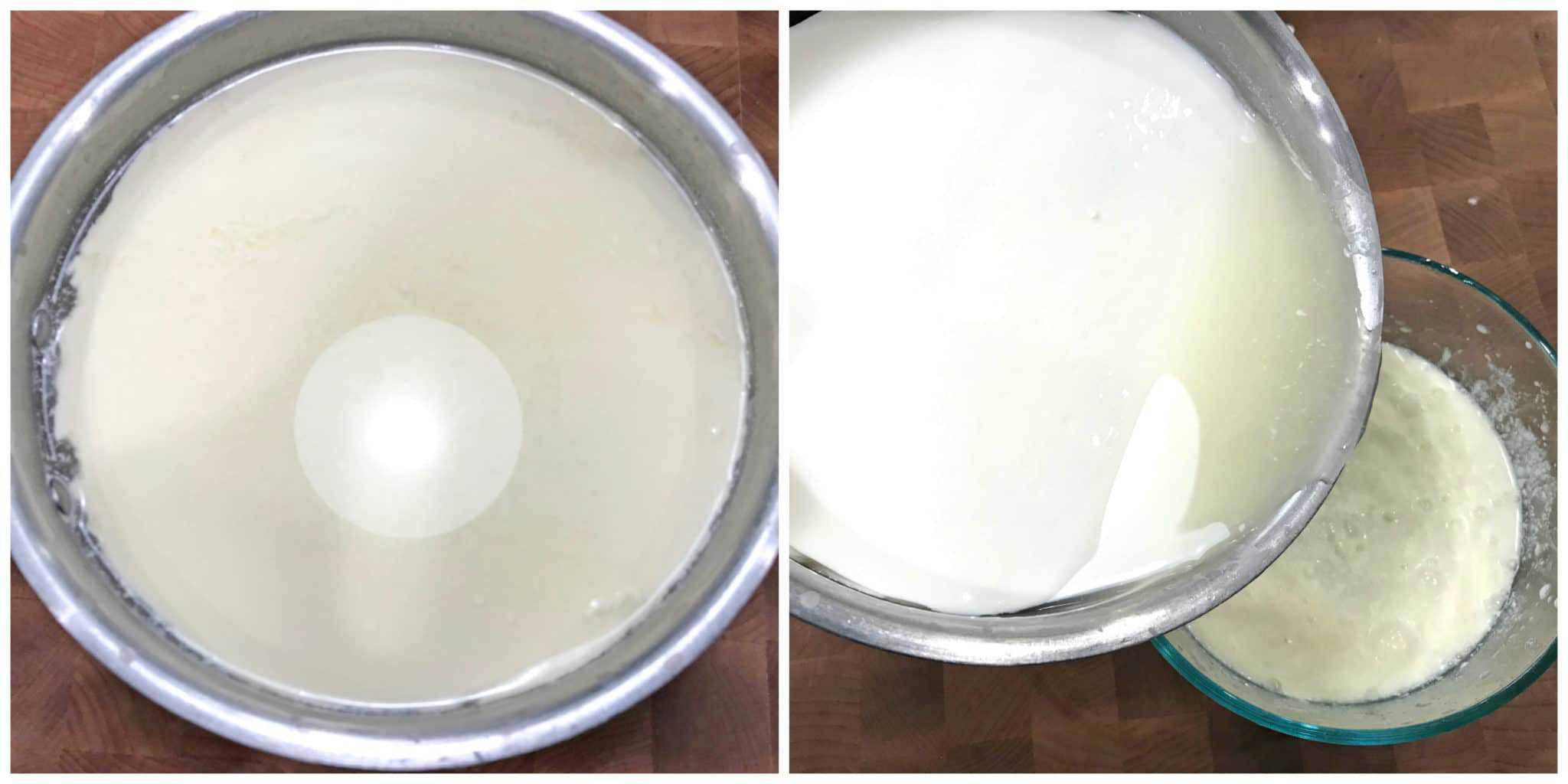
If the milk is properly set it will have pulled away from the sides.
Use a long, sterilized knife to check for a clean break in the thickened milk/curd (bottom right picture). If you can cut through it and get a clean break the milk is properly set. If it isn’t, let it continue to sit and check again after 30 minutes. Repeat if needed.

Use a long, sterilized knife to cut 2-inch-wide strips from top to bottom through the curd. Then follow the same process to cut 2-inch strips horizontally from side to side.

Now that you’ve used a long knife to cut the curd vertically, next use the skimmer to cut the curd horizontally into cubes as you scoop them out of the pot.
Place the curds in a colander lined with cheesecloth. Depending on the size of your colander you may need to work in batches. Let the curds drain for about 4 hours (it may be less depending on the mesh size of your cheesecloth).
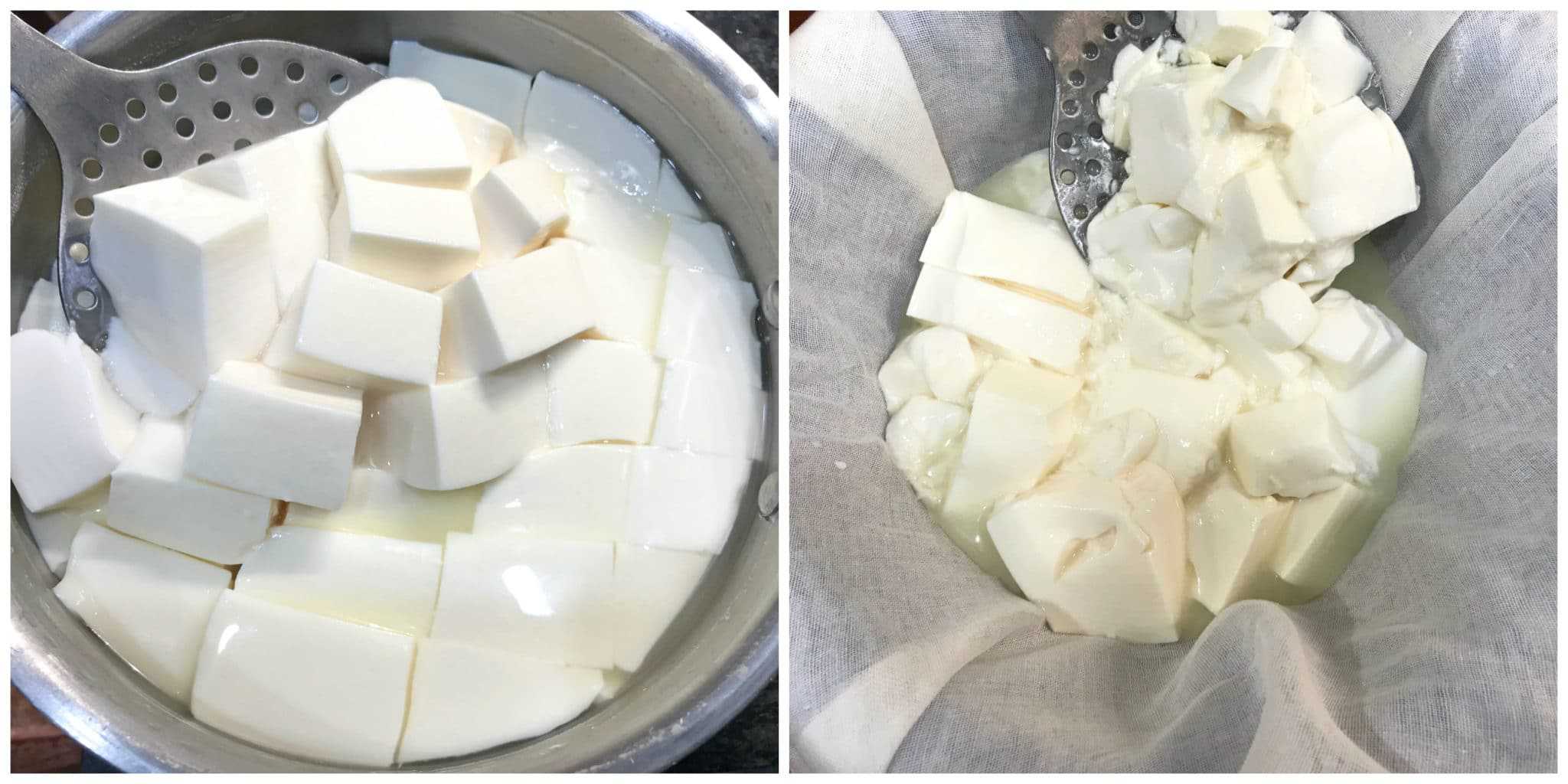
Let the curd drain until you get a thick, spreadable consistency. Transfer the finished quark to a bowl, give it several good stirs to break up any lumps, cover and refrigerate until ready to use. It will keep in the fridge for up to 2 weeks.

For an even creamier consistency you can make what the Germans call Sahnequark, or “cream quark”, by stirring in a little heavy cream.

Enjoy!

Be sure to also check out my tutorials on:
Save This Recipe
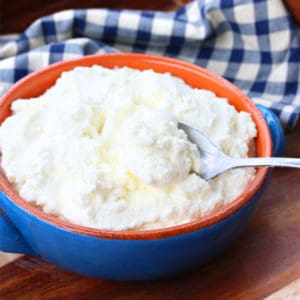
How To Make Quark Cheese
Ingredients
- 2 gallons whole milk (or half whole/half 2%) (whole milk will produce the creamiest, most flavorful result. Raw milk, which is what I use, will produce the very best results.)
- 1/4 teaspoon mesophilic culture
- 1/2 teaspoon liquid calcium chloride (omit if using raw milk)
- 1/2 teaspoon liquid rennet
- Additional equipment needed:
- stainless steel skimmer
- cheesecloth
- thermometer (you can use a dairy thermometer or a regular instant read digital thermometer)
Instructions
- Put the milk in a large sterilized pot over medium heat. Slowly heat it to 77 F. Don't try and speed up this process or the milk will not set properly. Stir the milk gently with a sterilized stainless steel spoon to prevent scorching. Remove the pot from the heat.
- Sprinkle the mesophilic culture evenly over the surface of the milk and let it sit for 5 minutes to rehydrate. Use a sterilized stainless steel skimmer, moving it in a gentle up-and-down motion to draw down and mix in the culture, avoiding breaking the surface of the milk. Stir the calcium chloride in 1/2 cup of cool, non-chlorinated water. Give the milk a gentle stir and while it's swirling, add the diluted calcium chloride to the milk. Immediately stir the milk with the skimmer using the same up-and-down motion. Stir the rennet in 1/2 cup of cool, non-chlorinated water and repeat the process of using the skimmer with the up-and-down motion. Make sure the calcium chloride and rennet are thoroughly mixed throughout the milk, otherwise the milk will not set properly.Cover the pot and let it sit in a draft-free location at room temperature for 24 hours (wrap the pot in a large towel if needed).After 24 hours check the milk. Tip the pot carefully to drain off the whey on the surface.
- If the milk is properly set it will have pulled away from the sides. Use a long, sterilized knife to check for a clean break in the thickened milk (see pics in blog post). If you can cut through it and get a clean break the milk is properly set. If it isn't, let it continue to sit and check again after 30 minutes. Repeat if needed. Use a long, sterilized knife to cut 2-inch-wide strips from top to bottom through the curd. Then follow the same process to cut 2-inch strips horizontally from side to side. Now that you've used a long knife to cut the curd vertically, next use the skimmer to cut the curd horizontally into cubes.
- Place the curds in a colander lined with cheesecloth. Depending on the size of your colander you may need to work in batches. Let the curds drain for about 4 hours (it may be less depending on the mesh size of your cheesecloth). Let the curds drain until you get a thick, spreadable consistency. Transfer the finished quark to a bowl, give it several good stirs to break up any lumps, cover and refrigerate until ready to use. It will keep in the fridge for up to 2 weeks. Yield: This will vary according to what type of milk you use and how long you let it drain. Yield will be approximately 4 pounds.
- For an even creamier consistency you can make what the Germans call Sahnequark, or "cream quark", by stirring in a little heavy cream.
Originally published on The Daring Gourmet February 2, 2020



















Hi Kimberly,
thank you so much for your detailed information on how to make quark. To buy quark I have to drive a long way here in Sydney and pay a huge price. Have tried to make quark with buttermilk and also lemon. It worked somewhat yet the flavor and consistency was not authentic. Just now I made quark with calcium chloride,rennet and culture and whilst the first lot didn’t set properly I changed the method to adding the calcium chloride about 30 minutes before the starter culture. Perfect result! Omas Kaesekuchen turned out perfect
and is a favorite with everyone consuming it.
Thanks again,
Juergen
Fantastic, Juergen, I’m so glad it was a success, thanks for the feedback!
Hi Kimberly,
Thank you so much for this recipe and all the background information as well. I’m from Europe myself and for twenty years in North America now. I’m so excited to hopefully being able to make quark myself. I have a cow and fresh whole unpasteurized milk every day. How much buttermilk (which I have let naturally cultured on my counter) should I add to the two gallons of milk?
Hi Fiona! I haven’t experimented making this with unpasteurized buttermilk so I’m not sure. I’d recommend using a recipe that uses the buttermilk/milk method as a guide. Using your buttermilk will definitely give you a better tasting result than store-bought buttermilk.
I made quark recipe from raw goats milk. It set up great. The only thing is I think it is rather grainy. Even though I shipped cheese and put back a little bit of milk, it is not smooth. Should it be?
Hi Marcia, no, it shouldn’t be grainy (though it’s still perfectly useable). A grainy or gritty texture is usually the result of heating the milk too quickly. To avoid the grainy texture heat the milk slowly.
Can it be made with raw goats milk?
I understand the fat structure in the milk is better.
Hi Kim, yes it can.
I am a little confused about ” heating up the milk to 77° F.” 77° F is room temperature here in Florida. Can I just wait until the cold milk reaches room temperature or do I have to ” heat it up” ??
Can’t wait to try this recipe, but I have a couple of questions:
– I have the Anova Precision Oven (a steam oven). I can set a very specific temperature and lowest is exactly 77F. So, I was thinking heating up the milk in the oven, using steam. Any thoughts as to, why that wouldn’t work?
– To let the milk set, does a higher temperature work? For example: I make yogurt in that oven all the time, but it sets at a 110F. Could I use that temperature?
Thank you for your help in advance 🙂
So, I tried this a couple of times now, making half of what is described in the recipe.
The issue I am running into is, when I cut the curd to check, if it is ready, it seems to be, looking like in the picture.
However, when I try to scoop out the cut curds, it all seems to fall apart and turns more liquidy.
When cutting into the curd, should there be more of a resistance, or shod it feel like cutting through very soft butter?
Hi Daniel, the curds will fall apart, yes, but they should not be turning liquidy. The important question though is whether the mixture is seeping right through the cheesecloth or if only the whey is draining through? If it’s the latter then with proper drainage you should still be able to make some good quark. Double or triple the cheesecloth layers if necessary.
Hello Kimberly,
I’d say the end result was something between regular quark and Sahnequark.
I made half of what the recipe was asking for and out of gallon of milk, I got almost 4 pounds of quark. Is that the yield to be expected?
Hi Daniel, it sounds like it could have drained a little longer to develop a little thicker consistency but all in all it sounds like it was largely a success.
We just finished making this today…at least, it is still tied in a cheesecloth ball, suspended from a 1×2″ board over a stockpot, draining. We used only 1% milk as it is what we had on hand, plus low-fat is the Budwig recommendation, so for our purposes this was the right choice, though now, of course, I want to try it with whole milk. :-) We only used the Fromage Blanc culture from New England Cheesemaking, which contain rennet and I didn’t know about the calcium chloride, but it set well into curds just the same. Delicious, slightly sour taste, just as you say. We are very pleased and thank you for your authentic, detailed instructions and lovely photos.
Wonderful, Fiordelisa, I’m so happy it was a success and appreciate the feedback, thank you!
I haven’t tried this yet. However, just to have a recipe is outstanding. When I lived in Germany, I was addicted to Fruelings Quark (Spring Quark). If you have any ideas about how to duplicate that flavour, I would be delighted. I know it had onions, garlic and some other things in it.
Hi Anne, yes, Frühlingsquark is one of my favorite things. I LOVE eating it with new potatoes. The ratios of ingredients different from cook to cook and comes down to personal taste, but the typical ingredients include a little cream or milk and finely minced green onions, chives, parsley, garlic, red radishes, some lemon juice, and salt and pepper. These are all mixed together with the quark and then the quark is covered and chilled for a few hours to allow the flavors to meld.
I am severly lactose intolerant. Will this work if I use certified lactose free whole milk? I really want to try this! I miss cheese!!
Hi Elizabeth, I haven’t personally tried it but from what I’ve read you can successfully substitute lactose free milk for most soft/spreadable cheeses, including quark. If you give it a try please let us know how it goes!
I can add to the pain finding some German products abroad. Living for 20+ years in Australia and craving the German easy to get products. Your recipes are totally easy to follow and a great success every time. Made now 8 kilo of quark and froze it. It’s easy to defrost and stir up the consistency to a smooth one with a bit of milk or cream. Unfortunately growing up with raw milk and knowing how good it is, we are not allowed to use or have the ability to purchase raw milk. Never mind we have Quark now! Thanks Kimberly, keep those German recipes coming.
I’m so happy to hear that, Andrea, thank you so much! :)
Please ask around and check around, maybe even the bulletin board at Whole Foods, for local dairies from whom you can get raw milk. In the last state where we lived, you had to “buy a share” in the cow. That way you owned part of the cow and were legally allowed to have some of the raw milk. In our current state, some dairies sell raw milk and say it is for animal consumption only, but certainly very, very pure and “do not tell us all the health benefits that you yourself get from it or we will lose our license.” :-) So…
I followed the recipe exactly as written, 2 gallons store bought full-fat milk (no fresh milk here), mesophilic culture, and rennet, my cheesecloth was very dense so it took longer than 4 hrs to drain properly but totally worth the wait! Ended up with about 4lbs (just 2oz short) of delicious quark. Will be making a Käsekuchen tomorrow! Thanks for such a detailed recipe, have done several recipes from the Daring Gourmet and always a success
Thanks so much, Ana, I really appreciate that! And hooray on the upcoming Käsekuchen!!
A few thoughts. If using consumer milk, it’s often recommended to add calcium chloride, it helps restore some of the qualities of raw milk, regarding curdling, it will give a higher yield.
In India, many households make curds/yogurt daily. Cooking the raw milk ca 80 C (pasteurizing), let cool to room temperature, 30-35 C, add a cup of yogurt from yesterdays batch. The milk curdles in 3-5 hours, any longer will give a more sour taste. I brought some live culture with me when I moved to Thailand, it was winter 10-20 C, so curdling time was more than two days. Adding rennet I’d expect a faster curdling than 24 hours, as you suggest.
While the milk is curdling, it should not be disturbed, it will break and get a grainy texture. If temperature is too high, you may get a “slimy” texture, taste is fine though.
Someone asked about using cream. Just use the Mesophile culture, it may take 24-48 hours, to make a very good sour cream/creme fraiche. This can maybe be drained, to make cream cheese, or whisked for a very long time, 10-20 minutes, to separate into butter and old fashioned buttermilk, with live culture, that can then be used to make quark/labne.
In Scandinavia quark is generally a low fat fresh cheese, where as your version sounds like ca. 20% fat cheese. In Denmark they hay smoke quark, ca. 5 minutes to make the specialty “rygeost” (smoke cheese) it is often sprinkled with caraway seeds. I think you might like it.
Hello, I used your recipe today and it came out great. I used one gallon of milk but kept the Rennet and the Mesophilic culture amounts as you listed them. My Quark tastes a bit sour. Any thought of why? I had it sit for about 24 hours.
Hi Claudia, it will have a mild sour taste, that is completely normal. The flavor can also be impacted by the type/brand/batch of mesophilic culture.
Hi, Thank you for the recipe and it worked great. I used raw milk and microbical rennet. Maybe I should have added bit more then 1/8 tsp of rennet but nevertheless the result was great. However I have a suggestion and that is you mention what is room temperature? I am from the middle east and our room temperature could be anything between 25c to 45c 😂😂. Today it was about 35 and the quark tested bit sour. Please advise what room temperature is the right temperature. Thank you very much. I’m going for the German cheesecake with my quark😎😎
Hi Albahlani, room temperature here is considered 20-22 C. Any hotter than that the quark will ferment very quickly and sour easily.
I guess that’s what happened. What about if I put it in a fridge will it set?
Most likely not because the cold fridge temperature will inhibit the cultures.
Tried 3 times now; only get 1-1/2lbs quark out of a gallon whole milk. Never sets like in your pictures, more like thick, lumpy milk. Can’t get raw milk because it’s illegal in CA.
Does it have to be a stainless steel skimmer? Can I use plastic instead?
Hi Sam, stainless steel is always what’s recommended in cheesemaking; I haven’t tried plastic.